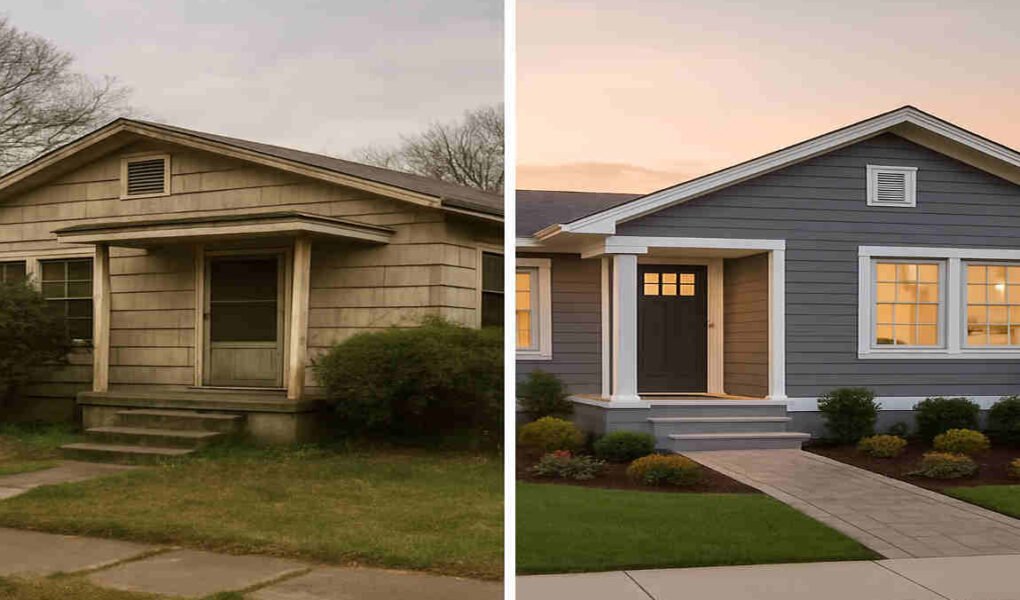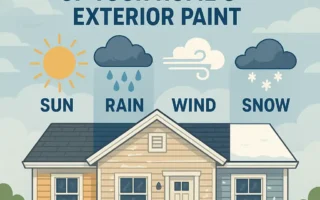Fixer-uppers come with plenty of challenges, but when done right, they can be a smart investment, both in comfort and long-term value. Whether you’re renovating for your family or preparing to sell, the right upgrades can offer a major return on investment.
In a fast-growing city like Franklin, TN, where homes move quickly and the market favors sellers, strategic improvements can put you in a strong position. Plus, with the higher cost of living, upgrades that reduce monthly expenses can also make a real difference over time and attract buyers.
In this article, you’ll find nine key updates that can boost a fixer-upper’s value. Whether you’re planning to live in the home or list it soon, these changes can help you get the most out of your investment.
Start With a Home Inspection and Prioritize Safety
Every fixer-upper needs a full home inspection before you make any big decisions. A professional inspection will reveal problems that may not be visible at first glance—things like outdated electrical wiring, water-damaged joists, plumbing leaks, or foundation issues.
It’s tempting to jump straight into design, but a hidden electrical issue or an old furnace could become a financial burden down the road. Tackling these issues first also gives you peace of mind, whether you plan to live in the home or sell it.
Replace the Roof
If your fixer-upper has an aging or damaged roof, replacing it should be high on your to-do list. In cities like Franklin, where homes are exposed to heavy rain, occasional tornadoes, and stormy weather, a strong, modern roof offers essential protection.
But it’s not just about function. A new roof also enhances the home’s appearance. It signals that the property is well-maintained and move-in ready. In an expensive city like Franklin roof replacement cost estimates might vary depending on roofing materials and square footage, as well as the experience and expertise of roofers, so it’s smart to compare not just prices but also whether you’re getting your money’s worth.
Upgrade the HVAC System for Comfort and Efficiency
Heating and cooling systems are often overlooked during cosmetic upgrades, but they play a big role in both comfort and long-term savings. If the existing HVAC system is more than a decade old, it may be running inefficiently and costing more than it should on energy bills. A modern system offers better temperature control, quieter operation, and lower monthly costs.
Upgrading to a high-efficiency unit, especially one that includes a smart thermostat, adds appeal for potential buyers. It also makes day-to-day life more comfortable, particularly in areas with hot summers and cold winters. Be sure the system is properly sized for your home—too large or too small, and it won’t perform well.
Open Up the Floor Plan or Improve Flow
Many older homes feel chopped up and cramped compared to today’s open-plan living trends. You don’t necessarily have to knock down every wall, but removing the right one can really bring a home into the modern era.
Even minor layout adjustments can improve how a home feels. Widening a doorway or changing the swing of a door can improve movement through the home without major structural changes. When you improve flow, the entire space feels more usable and updated—two things buyers are always looking for.
Update the Kitchen Without Overspending
The kitchen is one of the most valuable rooms in the home, and fortunately, it doesn’t have to be the most expensive to update. In many cases, you can keep the layout but upgrade the surfaces and finishes. Refacing cabinets, replacing outdated hardware, and installing new countertops can completely change the look and feel of the space.
Other low-cost improvements include adding a tile backsplash, installing new lighting, and updating appliances. Stick with neutral colors and simple designs to appeal to a wider range of buyers.
Renovate Bathrooms for Clean, Modern Appeal
Bathrooms play a big role in how a home is perceived. A dated or worn-out bathroom can turn buyers away, even if the rest of the home looks great. Fortunately, bathroom renovations don’t have to be complicated to be effective. Simply replacing old vanities, upgrading lighting, and swapping out outdated fixtures can transform the space.
Focus on creating a clean, bright, and functional bathroom. New tile, fresh paint, and a modern mirror can instantly make it feel more up-to-date. If you’re dealing with old plumbing or signs of water damage, it’s wise to update the pipes and check for any leaks. A bathroom doesn’t need to be luxurious, but it should feel fresh, well-maintained, and ready to use.
Improve Insulation and Seal Drafts
Older homes often lack proper insulation, which can lead to uncomfortable indoor temperatures and higher energy bills. Adding insulation to your attic, crawl space, and exterior walls is one of the most practical improvements you can make. It helps regulate temperature year-round and reduces the strain on your heating and cooling systems.
Don’t overlook small gaps around windows, doors, or vents. These can let in cold air in the winter and heat in the summer. Sealing drafts with weather stripping, caulk, or spray foam is a quick fix that offers immediate benefits.
Replace Windows or Add Energy-Efficient Glazing
Windows play a big role in both comfort and visual appeal. Old, single-pane windows often let in drafts and make a home feel outdated. Upgrading to double-pane or energy-efficient windows improves insulation, lowers utility costs, and reduces outside noise.
If new windows aren’t in the budget, there are still ways to improve performance. Adding storm windows, using window film, or updating old seals can help reduce heat loss.
Boost Curb Appeal with Landscaping and Entryway Touches
The outside of your home is the first thing people see, and first impressions matter. Curb appeal doesn’t require a huge investment—just thoughtful updates. Deal with those overgrown bushes by trimming them, edge the lawn, and add fresh mulch to garden beds. A few well-placed plants or flowers can bring a tired yard back to life.
Pay attention to the entryway too. A freshly painted front door, new house numbers, or a modern mailbox can make a surprisingly big impact.
Smarter Fixes, Stronger Returns
Improving a fixer-upper is all about making the right choices, not necessarily the most expensive ones. When you focus on practical updates, you build a home that’s comfortable to live in and attractive to future buyers. Each of these upgrades works together to increase your return on investment.
The key is to prioritize what matters most: safety, efficiency, and visual appeal. When those pieces are in place, your fixer-upper becomes more than just a project—it becomes a smart, long-term asset.
You may aslo read (what to consider before making any big changes at home).




